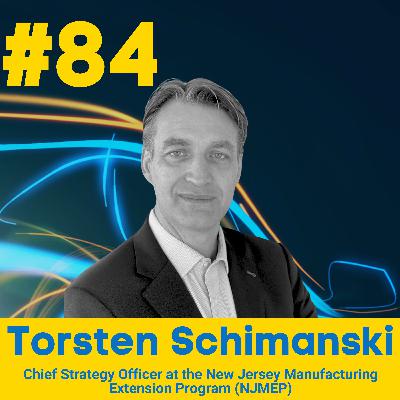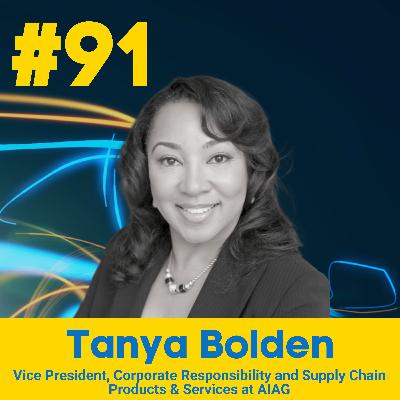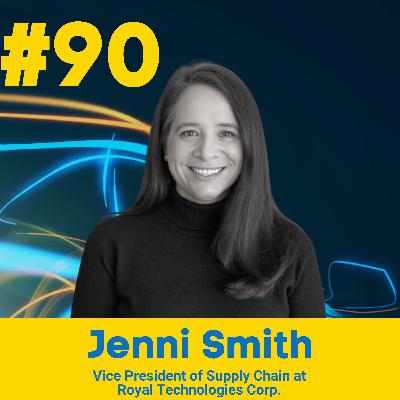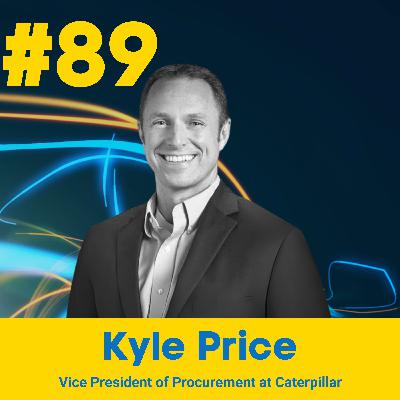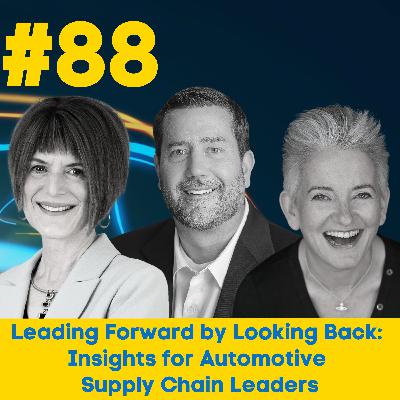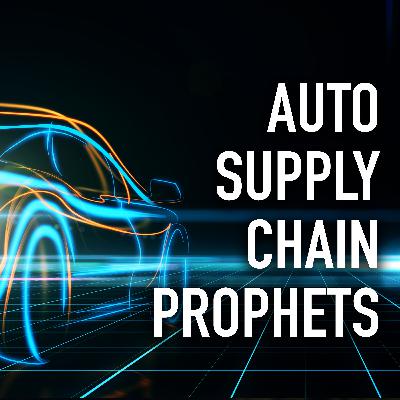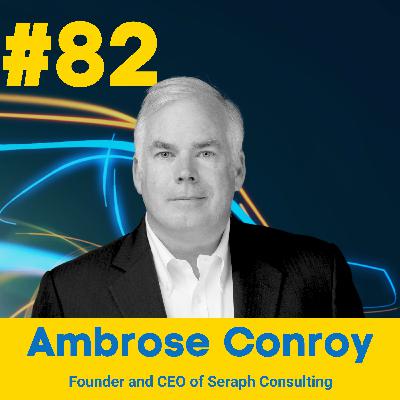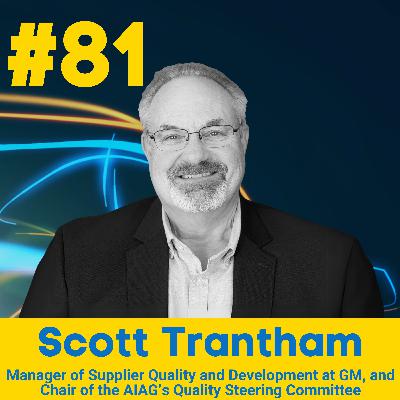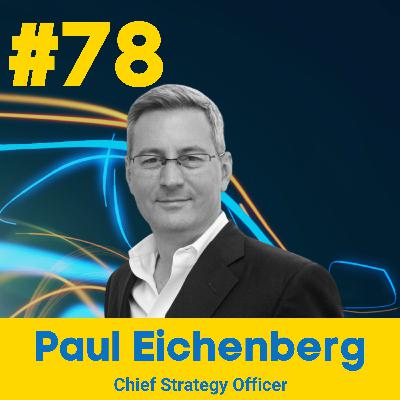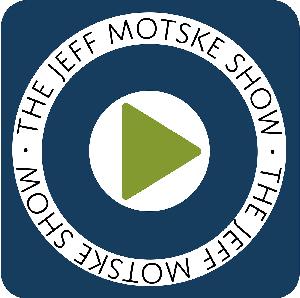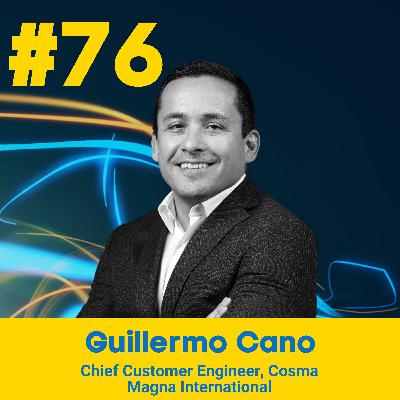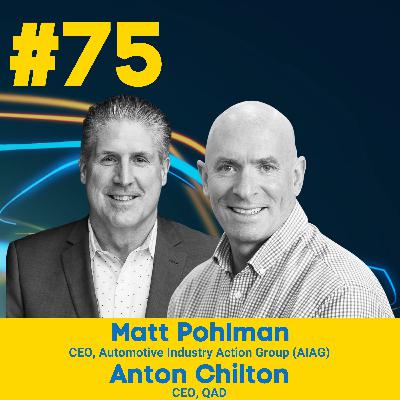Mind the Gap: Rethinking Talent Pipelines with a Supply Chain Mindset
Description
During her trip to Wales, Jan Griffiths took a call from CBS Detroit to weigh in on tariffs. That conversation led her to a bigger question: even if we bring manufacturing back to the U.S., do we have the workforce to support it?
This led to this conversation with Torsten Schimanski, the Chief Strategy Officer at NJMEP, who’s spent years addressing the talent gap in U.S. manufacturing.
In this episode, Torsten explains that millions of manufacturing jobs in the U.S. could go unfilled in the coming years, and current efforts to address this issue will not be enough to close the gap.
The industry is facing decades-old perceptions of manufacturing work, a massive generational exit, and the reality that most companies don’t have a clear talent pipeline or long-term plan. Torsten doesn’t just see this as an HR problem. He sees it as a supply chain issue.
So, he introduces an innovative approach: apply core supply chain tools—demand planning, sourcing, supplier management—to workforce strategy. That means forecasting the skills you’ll need, identifying where you’ll get them, and making retention a priority before it becomes a crisis.
Torsten also criticizes the passive mindset that waits for the government or outside forces to “fix” the problem. In his words, if you’re waiting for someone else to build your workforce, your business might not be around much longer.
He’s clear about what will happen if we don’t take action: production delays, rising costs, quality issues, and constant turnover. Even automation won’t save us if no one’s trained to run or maintain the machines.
This isn’t a future problem. It’s already here. And if manufacturing companies want to survive the next decade, they must take ownership of workforce development—starting now.
Themes discussed in this episode:
- The workforce shortage threatening the future of U.S. manufacturing
- Why manufacturing workforce development needs a supply chain strategy
- The effects of baby boomer retirements on manufacturing labor shortages
- How outdated perceptions of factory jobs affect workforce recruitment
- The business risks of ignoring workforce development in manufacturing operations
- How to apply supply chain strategies to manufacturing workforce planning
- How NJMEP supports small manufacturers with workforce training programs
- Why manufacturers must lead workforce development—not wait for government solutions
Featured on this episode:
Name: Torsten Schimanski
Title: Chief Strategy Officer at New Jersey Manufacturing Extension Program (NJMEP)
About: Torsten is the Chief Strategy Officer at the New Jersey Manufacturing Extension Program (NJMEP), a nonprofit focused on supporting and advancing manufacturing in New Jersey. Prior to joining NJMEP in 2017, he led the Training & Learning Center at Festo Didactic, a global leader in industrial automation and education, and worked internationally as a business consultant specializing in leadership and workforce development. His contributions have earned him the 2017 Impact Award from the New Jersey Technology and Engineering Association and, with the NJMEP PEN-Team, the 2021 Excellence in STEM Education Award from the Health Care Institute of New Jersey.
Connect: LinkedIn
Mentioned in this episode:
- New Jersey Manufacturing Extension Program (NJMEP)
- How to Align Workforce Development With Supply Chain Management by Torsten Schimanski
- The Future Makers & Creators Tour
- New Jersey Economic Development Authority
- Find Your Local MEP Center
Episode Highlights:
[04:14 ] The NJMEP Mission: Torsten explains how NJMEP helps small and midsize manufacturers stay competitive—and stay in the U.S.—through hands-on support and workforce development
[05:53 ] Why He Cares: A broken apprenticeship system and student debt crisis pushed Torsten to bring a better model for workforce development to the U.S.
[07:05 ] The Numbers Don’t Lie: Millions of manufacturing jobs are at risk of going unfilled—thanks to retiring workers, a growing skills gap, and an outdated image problem.
[09:06 ] Guessing the Gap: When most people can’t even estimate how many manufacturers exist, it’s no wonder the talent pipeline is running dry.
[11:45 ] Beyond the Paycheck: It’s not just the money—pride in building something real is what keeps people in manufacturing.
[13:39 ] Supply Chain, Meet HR: What if we applied supply chain tools like demand planning and sourcing to fix the workforce crisis? Torsten thinks it’s exactly what manufacturing needs.
[15:49 ] The Cost of Doing Nothing: Without a workforce strategy, manufacturers face quality issues, poaching wars, profit loss—and robots no one’s trained to run.
[19:14 ] Help for the Hustling: NJMEP supports overwhelmed manufacturers with free assessments, expert solutions, and a network built on trust—but workforce strategy still needs to make the priority list.
[21:45 ] Stop Waiting, Start Building: Torsten urges manufacturers to stop relying on government fixes and start using the tools they already have to build their own workforce pipeline.
[25:49 ] Start With the Gaps: Before calling for help, manufacturers need to map the skillsets they’re missing—because the people on the floor already know where the holes are.
Top Quotes:
[06:03 ] Torsten: “I noticed that the apprenticeship programs, the way I know them from Germany, are not really sufficient in the United States. And to be honest, as a European and someone who dearly cares about workforce development, coming from a country where education is technically for free, it just hurt me that youngsters at the age of 20 to 24 are finalizing their college education with a five- or maybe six-digit number in debt. And an apprenticeship is the alternative to that. So, I started looking into that, and I had the opportunity then to, in the manufacturing industry, bring the German or European-based model to the United States. It started with a company called Festo Didactic, and then NJMEP gave me the opportunity to do it full time—and that's the reason why I care.”
[08:33 ] Torsten: “In manufacturing, there is a certain lack of image, or we do have an image. If I think about my mom, if I tell her that I work in manufacturing, she is wondering, what am I doing? Because her picture is very much from the 1920s in manufacturing, where we talk about dull and dangerous jobs. It couldn't be further from reality. But the point is, if we are not promoting jobs in the industry as well as the really sustainable salaries that are coming with it, no one is going to move into that.”
[11:09 ] Torsten: “With all the manufacturing companies that the administration wants to bring back to the United States, we have to think about where the workforce is coming from? Because the jobs that we lost 30 years ago went overseas, these are not the jobs that are coming back. These jobs are going to be different in terms of requirements, in terms of the machines that we are going to use, in terms of maintenance, and this is exactly what we have to look into as the United States, but also every single company by itself.”
[22:49 ] Torsten: “If you wait for the government to fill the jobs in your facility, I’m really concerned about your facility because it's not going to happen. So, in this case, help yourself because no one else is going to. But all the tools are there. And like a big box of Lego at home, it doesn't make sense if you have all the stones sitting on the floor, but if you start putting them together in a certain order—and this is what we are helping our clients with—then all of a sudden it does make sense.”
[26:11 ] Torsten: “What I think every company should do as a first step before reaching out to anyone is to map out the critical skillset that you need for your organization that you need today, on the one hand side. And then, take it to the next 1, 2, 3, 4, up to 10 years to see what's going to happen. It sounds complicated, but to be honest, if you ask your workers on the shop floor, they know the answer by heart. Within a minute. Even though they're not HR experts, they know the gaps, they know the issues, they know what's missing.”

